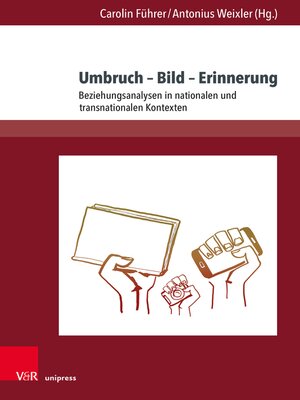Umbruch – Bild – Erinnerung
ebook ∣ Beziehungsanalysen in nationalen und transnationalen Kontexten · Deutschsprachige Gegenwartsliteratur und Medien
By Carolin Führer

Sign up to save your library
With an OverDrive account, you can save your favorite libraries for at-a-glance information about availability. Find out more about OverDrive accounts.
Find this title in Libby, the library reading app by OverDrive.



Search for a digital library with this title
Title found at these libraries:
| Library Name | Distance |
|---|---|
| Loading... |
Umbrüche markieren historische Zäsuren und teilen unser Geschichtsbewusstsein in ein Davor und Danach. Bilder helfen uns diese Zäsuren zu begreifen und greifbar zu machen, sie eignen sich aber auch in besonderer Weise zur Emotionalisierung unserer historischen Wahrnehmungen, indem sie im Gestus des Faktischen auftreten und eine stark vereinfachende Sicht des komplexen Phänomens Umbruch erlauben. Anhand unterschiedlicher zeithistorischer (trans-)nationaler medialer Beispiele wird untersucht, wie mit und durch Bilder Umbrüche registriert und erinnert werden und welche Sinnstiftungs-, Narrativisierungs- und Interpretationsangebote für die Bearbeitung und Bewältigung von Veränderungen durch Bilder entwickelt werden. Umbrüche scheinen hierbei weltweit in ganz unterschiedlichen historischen und kulturellen Kontexten einerseits zu ästhetischen Innovationen und zu neuen Formen des Erzählens zu führen, andererseits werden Umbrüche überhaupt erst durch Bilder und damit verbundenes bildliches sowie visuelles Erzählen und damit durch Erinnerungsdiskurse ex post manifest und erfahrbar. Transitions mark historical breaches and divide our history awareness into a before and after. Images help us to understand these breaches and assess them. However, they are also suitable for emotionalising our conception in a particular way by appearing in the gesture of facts, thus enabling a strong simplified perspective on complex phenomena. With the help of various historical (trans-) national media examples the contributors analyse how transitions have been registered and remembered by images and which meaning, narrative and interpretation methods are being developed for coping with changes through images. On the one hand, transitions seem to lead to aesthetic innovations and new forms of narratives in different international historical and cultural contexts. On the other hand, transitions can only become ex post manifest and accessible through images, visualised narratives and discourses of remembrance.







